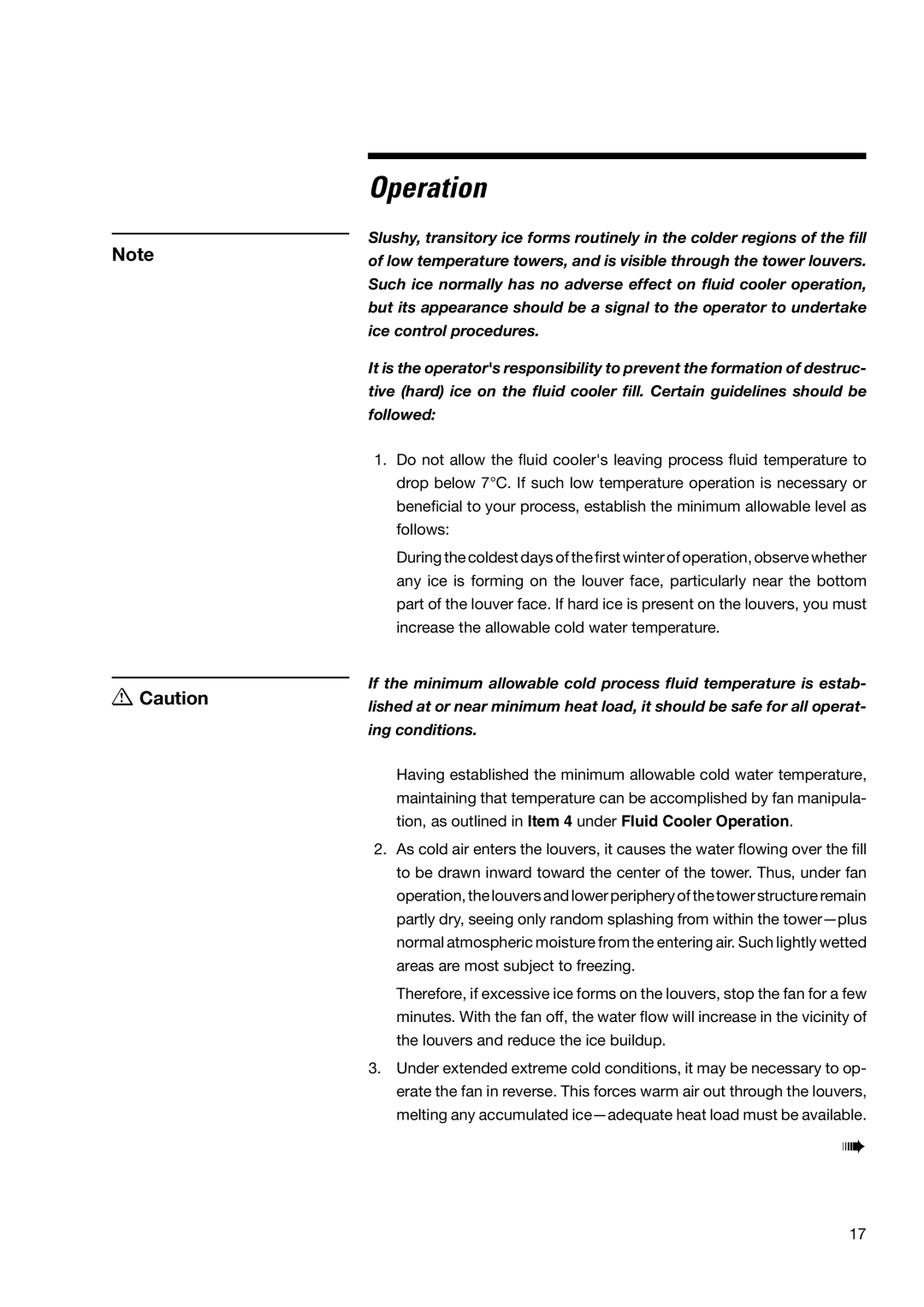MHF702, MHF705 specifications
SPX Cooling Technologies has established itself as a leader in innovative cooling solutions, with the MHF705 and MHF702 units being prime examples of their commitment to efficiency and performance. These models are designed specifically for cooling processes in various industrial applications, providing reliable operation while minimizing energy consumption.The MHF705 and MHF702 units are both equipped with advanced features that enhance their operational efficiency. One of the standout characteristics is their modular design, which allows for easy customization and scalability according to the system requirements. This flexibility makes them suitable for a wide range of applications, from HVAC systems to industrial cooling processes.
In terms of technology, both units utilize SPX’s proprietary air distribution system that optimizes airflow patterns within the unit. This ensures uniform cooling and reduces hot spots, contributing to enhanced overall performance. Additionally, the MHF series incorporates high-efficiency fans designed to reduce energy consumption while maximizing cooling output. These fans not only operate quietly but also have extended lifespans, reducing the need for frequent replacements.
Another significant feature of the MHF705 and MHF702 models is their robust construction. With materials designed to withstand harsh environmental conditions, including corrosion-resistant coatings, these units promise longevity and durability. This resilience is crucial for industries where reliability and minimal downtime are paramount.
The MHF series also excels in terms of maintainability. Features such as easily accessible components and modular serviceability make routine maintenance straightforward, which helps in limiting operational interruptions. Additionally, the units are designed with energy efficiency in mind, complying with various environmental standards, which reflects SPX's commitment to sustainability.
Both models also benefit from advanced control technologies, allowing for seamless integration with existing systems. Users can monitor and adjust settings easily via a user-friendly interface, ensuring optimal performance tailored to specific cooling demands.
In summary, SPX Cooling Technologies’ MHF705 and MHF702 units represent the pinnacle of modern cooling technology. With their advanced features, scalable design, high durability, and energy-efficient operation, these cooling solutions stand out as ideal choices for a diverse range of industrial applications, ensuring that businesses can rely on them for efficient and dependable cooling performance.

